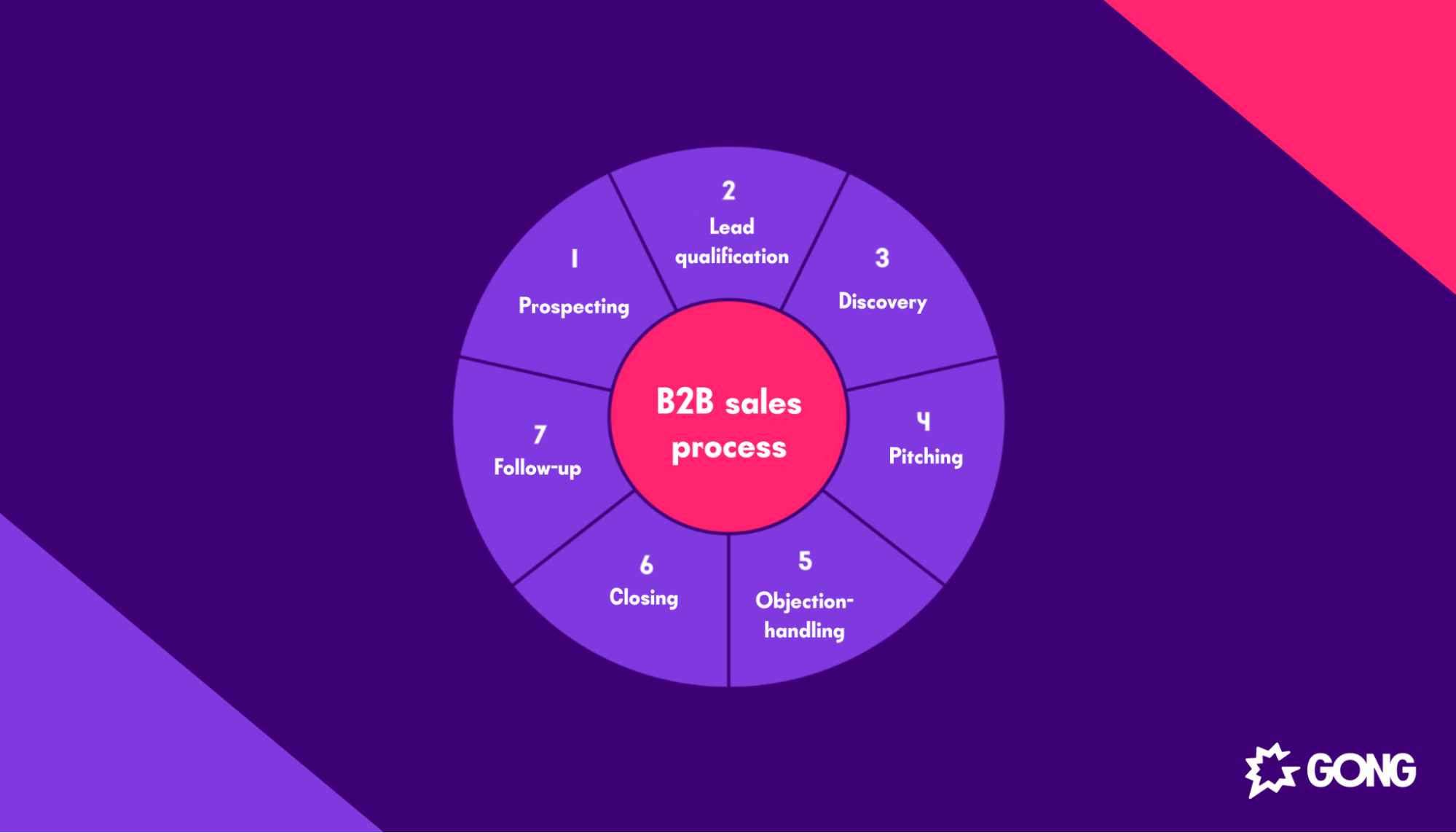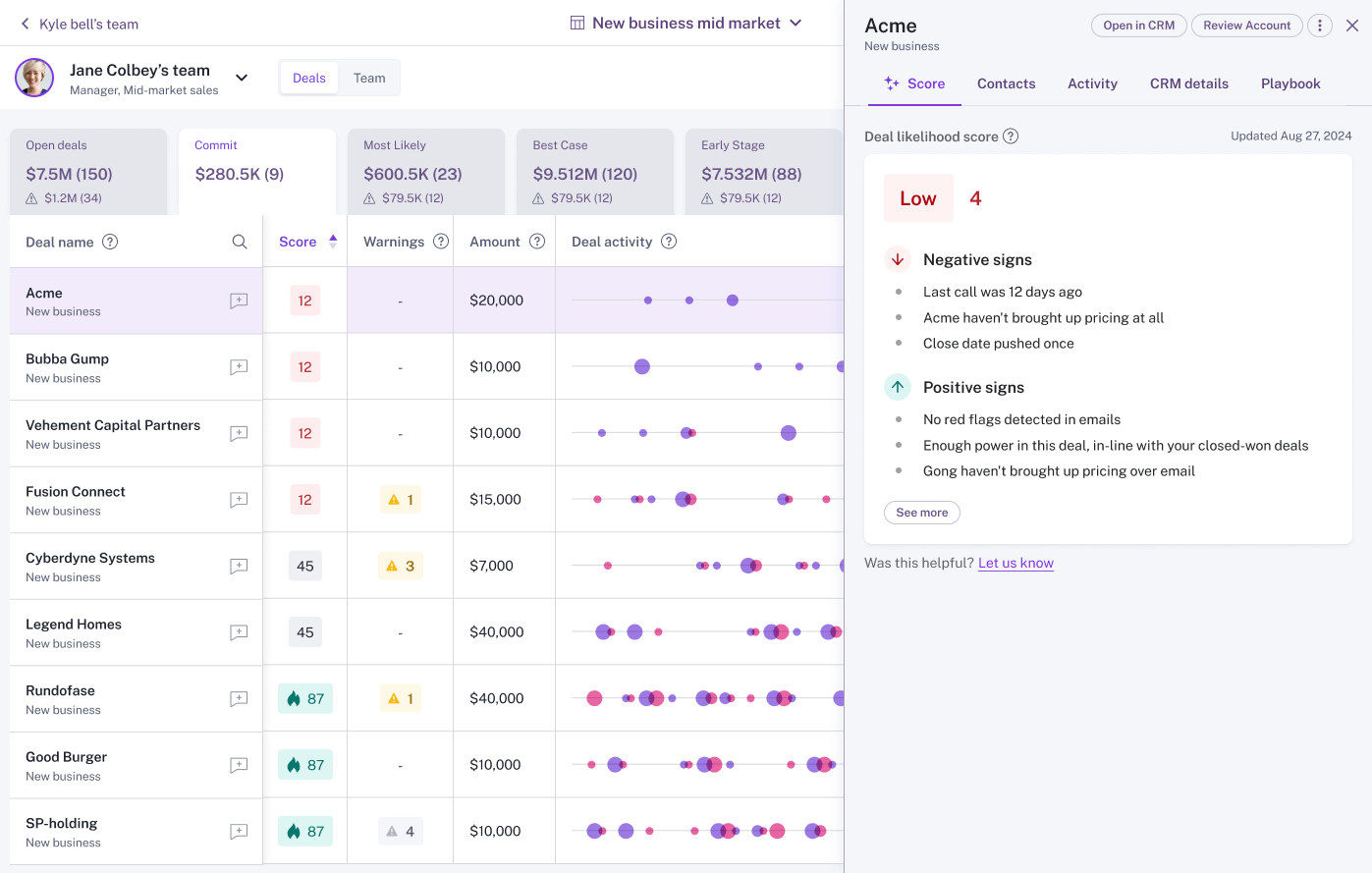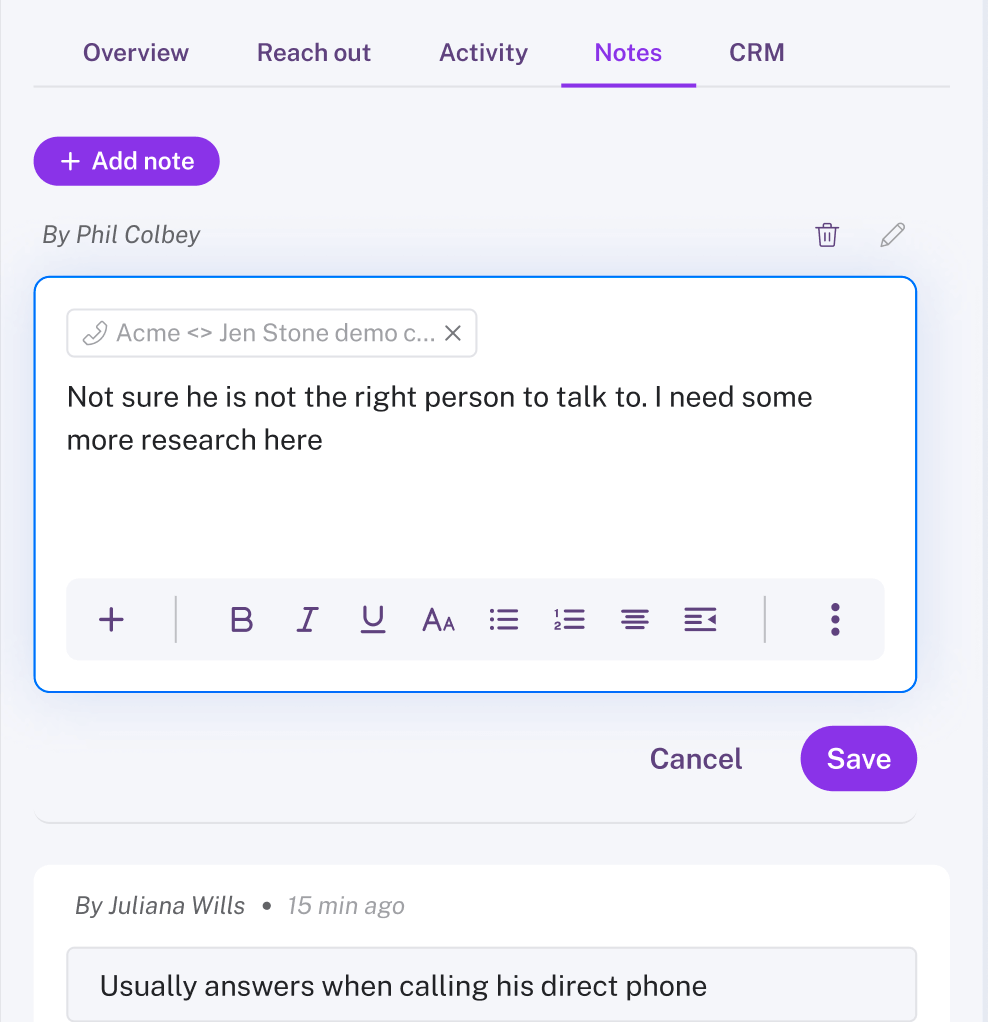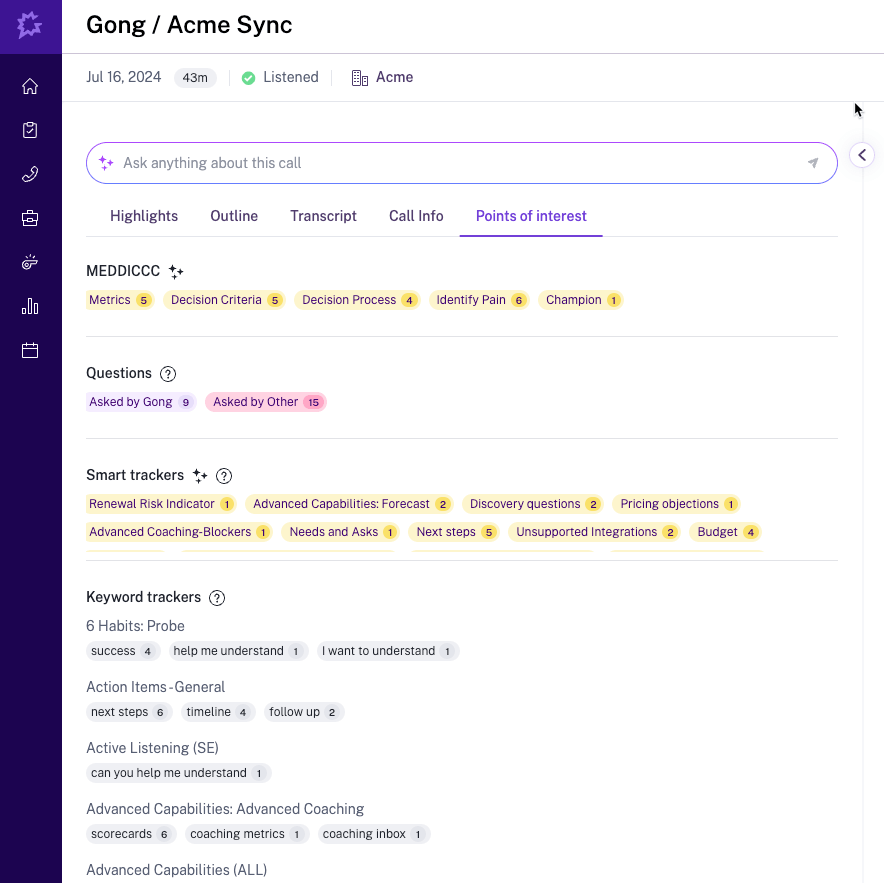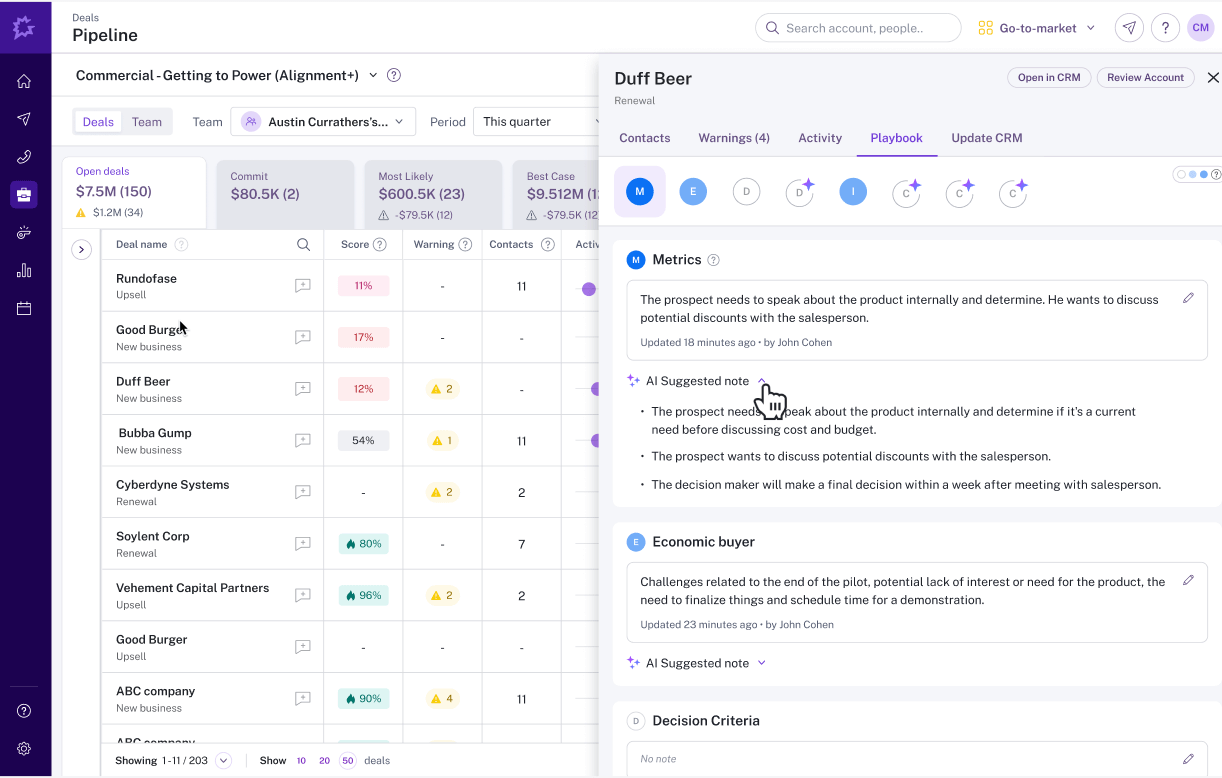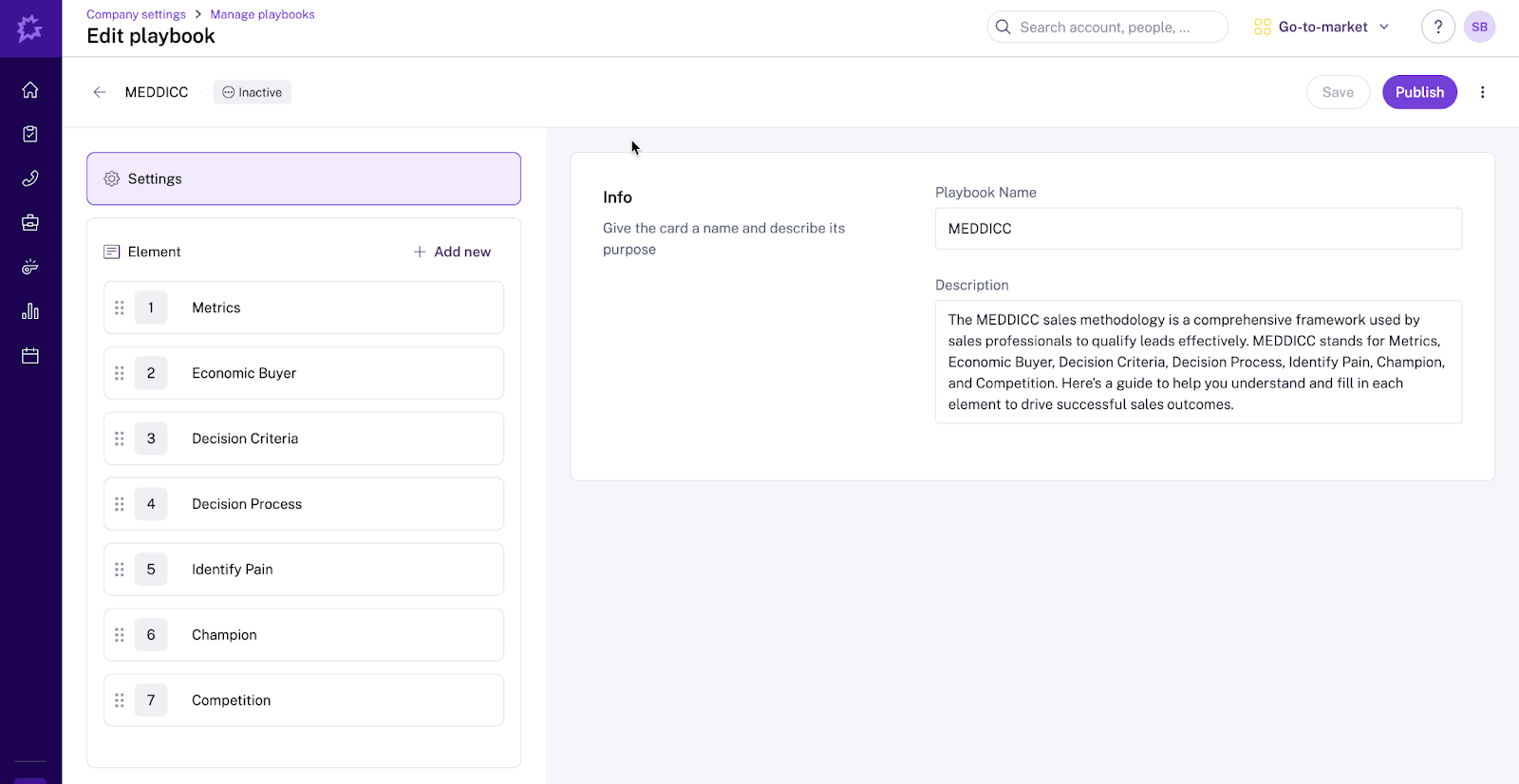How to optimize your B2B sales process for more wins
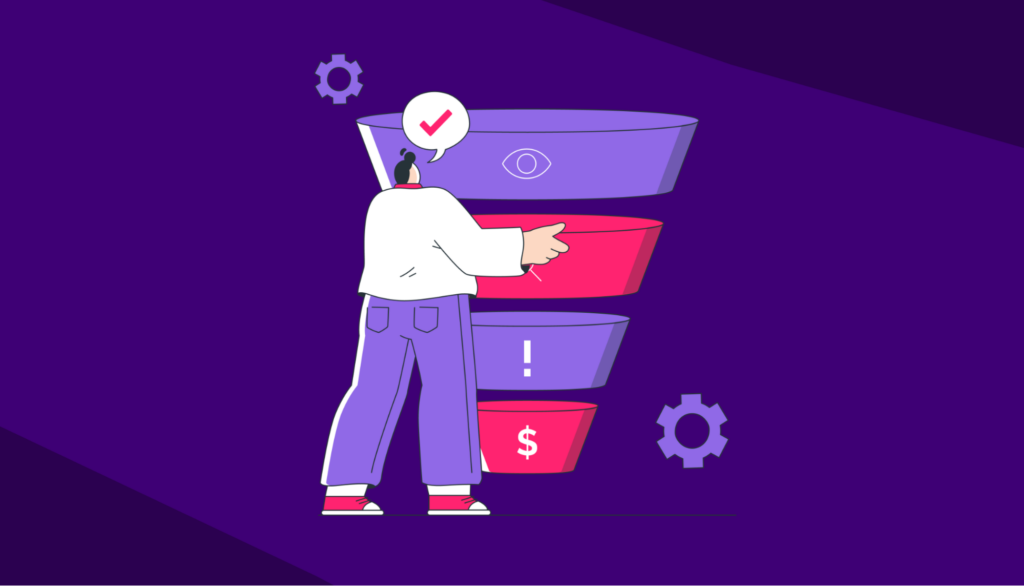
Your B2B sales process is the foundation of your team’s success — but even the best foundations show cracks over time. Whether it’s bottlenecks in lead qualification, delays in decision-making, or inefficiencies in closing deals, these obstacles can cost you valuable time and revenue.
The good news? Every challenge is an opportunity to optimize your process.
This article explores advanced strategies and insights to refine your sales process, eliminate friction, and drive higher, more predictable sales numbers. Let’s get started.
What the B2B sales process means to today’s sales teams
The B2B sales process is a series of steps to turn prospects into customers. But for today’s sales managers, the real challenge isn’t understanding the stages of a deal — it’s adapting them to longer sales cycles, complex decision-making, and changing buyer behaviors.
When you get a real sales process, it is so empowering. I use it with every single one of my clients.
Sarah Bedwell, Founder, Sarah Bedwell LLC
Gong Reveal Podcast: This is how to win the best reps in today’s competitive talent market
This shift is critical because buyers today are better informed than ever. With 96 percent of buyers conducting extensive research before engaging a sales team, a traditional, one-size-fits-all approach no longer works. Instead, sales teams must use data, technology, and personalization to meet buyers where they are — and the sales process itself must be dynamic.
When companies get it right, the results speak for themselves:
- 7 percent higher revenue
- 11 percent more reps meeting target
- 25 percent more deals closed
- 26 percent fewer customers lost
The message is clear: Companies that align their sales process with today’s buyer behaviors don’t just survive, they thrive. Optimizing each stage is what gets you there.
How to optimize each stage of the B2B sales process
Each stage of the B2B sales cycle builds on the one before it. Optimizing every step ensures your team’s productivity, predictability, and revenue growth, leading to better outcomes for you and your customers. Here’s how to do it:
Prospecting: How to find your ideal customers
A high-quality, predictable sales pipeline begins with finding the right customers. To achieve this, engage potential customers who align with your ideal customer profile (ICP).
The challenge
In B2B sales, decisions are rarely made by one person. Each deal involves an average of five decision-makers, and identifying actual influencers or B2B buyers can be time-consuming.
Sellers also struggle to balance personalization with efficiency. While they know generic messaging leads to low engagement, tailoring messages is time-intensive. On average, sellers spend 5.9 hours each week personalizing pre-written content and 6.2 hours creating outreach from scratch.
On top of that, teams must filter high-quality leads from noise. With so much data, it’s hard to know which leads fit your ICP. This is only exacerbated by data that is incomplete or inaccurate, which it often is.
Optimization strategies
- Leverage intent data platforms and predictive analytics. Websites like LinkedIn, Sales Navigator, and ZoomInfo help sales reps quickly identify high-quality leads. Predictive analytics scores leads based on their likelihood to convert, so your team knows where to focus.
- Adopt account-based selling (ABS). Concentrate on accounts with the highest ROI and use role-based targeting to reach decision-makers and influencers directly.
- Use AI to scale personalization. An AI-powered solution like Gong can identify warm leads, find the best time for outreach, and create personalized messages. It also automates the sales process to save time.
- Implement multi-channel outreach. To maximize reach, engage potential buyers on their preferred platforms, such as email, LinkedIn, and phone calls.
Lead qualification: How to qualify smarter, not harder
With longer sales cycles, there’s no time to waste on low-probability prospects. Therefore, B2B sales teams should prioritize opportunities by evaluating prospective customers’ needs, authority, budget, and timing.
Challenges
According to Forrester, 82 percent of C-suite executives believe their sales and marketing teams are aligned. But ask the professionals themselves, and 65 percent will tell you otherwise. This misalignment creates conflicting definitions of “qualified” leads, which clog pipelines and force sales teams to chase prospects who are unlikely to convert.
Another challenge lies in knowing who the actual decision-makers are. Engaging the wrong stakeholders can stall deals, while failing to involve key players early often leads to late-stage objections.
Furthermore, many qualification efforts rely on incomplete or unreliable data. For instance, a lead who seems uninterested based on email engagement might be researching your competitors, making them a high-priority opportunity. Without accurate intent insights, it’s nearly impossible to prioritize the best B2B leads.
Optimization strategies
- Create a Service Level Agreement (SLA). Align your sales and marketing teams by defining clear criteria for Marketing Qualified Leads (MQLs) and Sales Qualified Leads (SQLs). Be specific about lead scoring thresholds, required data fields, and handoff timelines.
- Implement AI-driven lead scoring. Sales AI tools use buyer engagement data, intent signals, and firmographics to identify the most promising leads. This enables sales teams to prioritize leads more effectively.
- Validate decision-makers during discovery calls. Train sellers to confirm key decision-makers early and uncover additional stakeholders. Frameworks like MEDDICC, BANT, or CHAMP can guide conversations and help your reps zone in on critical details.
Discovery: How to uncover what your prospects really need
Selling is the art of persuasion. And to be persuasive, you need to understand your prospects’ pain points, goals, and decision-making processes. You’ll use that information to create tailored solutions that truly resonate.
Challenges
Engaging all your key stakeholders is no easy feat. Each decision-maker has unique priorities, and missing someone important can lead to misaligned proposals, late-stage objections, or stalled deals.
Additionally, prospects may hesitate to share detailed information due to time constraints, trust issues, or their own unclear needs. Others might provide vague answers that don’t lead to actionable insights.
Then, sellers must balance depth and efficiency. Go too deep in a discovery call and the seller risks losing the prospect’s interest. Keep it too brief, and they may miss vital details that could make or break the deal.
Optimization strategies
- Do pre-call research. Use tools like LinkedIn, company websites, and CRM systems to gather insights about a prospect’s business, role, and potential challenges before the call. The better prepared your reps are, the more productive the conversation will be.
- Ask targeted questions. Train reps to use targeted, open-ended questions that uncover decision-making authority, budgets, and pain points. Frameworks like MEDDICC, BANT, or SPIN Selling provide an excellent structure for these conversations.
- Leverage call intelligence. Intelligent sales tools can automatically record discovery calls and identify patterns. When sales managers know what successful calls have in common, they know precisely how to coach reps to refine their techniques.
Pitching: How to make your solution impossible to resist
The best sales reps personalize their pitches to address the specific challenges of each potential buyer. Sixty percent of high-performing sales teams frame their offering as a solution to the customer’s pain points.
Challenges
A successful discovery process should reveal each stakeholder’s unique needs and concerns. But trying to address everyone’s needs in one pitch can dilute your message and reduce its impact. Reps who cover too many features risk overwhelming prospects, and presenting for too long may cause prospects to disengage.
B2B buyers also expect clear, tangible proof of ROI, which can be challenging to present — especially if you have to translate qualitative benefits into measurable metrics.
Optimization strategies
- Tailor your pitch to your audience. Include role-specific sections, such as financial metrics for CFOs or technical details for IT managers. Focus on what matters most to each stakeholder.
- Highlight outcomes over features. Demonstrate how your solution delivers measurable business results, like cost savings, revenue growth, or increased efficiency. Use ROI calculators or industry-specific case studies to provide proof that your solution will work for the buyer.
- Leverage AI. McKinsey’s latest B2B Pulse Survey revealed that sales teams that leverage personalization alongside AI are 1.7 times more likely to increase market share than those who don’t.
Objection-handling: How to win over hesitant buyers
Objections are a natural part of the sales process, and how you handle them can make or break a deal. Now is the time to address concerns and showcase your solution’s value.
Challenges
Before you address a prospect’s concerns, you must uncover them. However, prospects don’t always voice their objections up front, leaving hidden objections that can derail deals later.
Price is a common objection, and 31 percent of prospects back out of deals because they don’t see value for the price. While it’s tempting to offer discounts, doing so too quickly can undermine your solution’s value.
Each stakeholder’s role will influence the nature of their objections. For example, IT managers are more likely to care about security and integration, while CFOs will prioritize ROI. Aligning their priorities is critical to moving the deal forward.
Optimization strategies
- Proactively surface concerns. Train reps to ask open-ended, targeted questions to uncover hidden objections early. Gong’s Conversation Intelligence software can automatically capture and analyze past interactions to identify common objection patterns, giving your team a roadmap for addressing them.
- Reframe objections around value. If price is a concern, connect it to long-term ROI, like increased efficiency or cost savings.
- Leverage social proof. Build confidence by sharing case studies, testimonials, or metrics from similar clients (That part’s important!) who overcame similar challenges.
Track the success of these strategies in your Deal Boards and make sure you update your objection-handling playbooks accordingly so reps can respond confidently.
Closing: How to seal the deal with confidence
At this point, you’re optimizing to improve win rates. Focus on resolving the buyer’s remaining concerns, aligning stakeholders, and laying the groundwork for a successful partnership.
Challenges
Most deals slip because of delays in purchasing decisions, caused by:
- Internal bottlenecks
- Competing priorities
- Lack of buy-in
But those aren’t the only reasons. Contract reviews can introduce unexpected delays. Negotiations over terms, conditions, or pricing may also require multiple rounds, which risks stalling the deal.
To make matters worse, new objections — such as concerns about pricing, implementation, or stakeholder alignment — can emerge late in the process. These issues can derail even the most promising deals if they’re not addressed promptly.
Optimization strategies
- Simplify the process. Use tools like DocuSign or PandaDoc to streamline contract signing and reduce friction. Pre-approved, standardized agreements can further minimize delays with legal and procurement teams.
- Arm your sales team with tailored closing techniques:
- Use a summary close to reassure hesitant prospects by recapping key benefits.
- Apply an urgency close for time-sensitive offers, but note that the urgency must be genuine.
- Offer an alternative close to help indecisive prospects make a decision.
- Use an objection close to address and resolve lingering concerns.
- Involve Customer Success (CS): Involving CS teams during this stage helps prospects feel supported and committed to moving forward.
Follow-up: How to build long-term relationships
The follow-up stage is when long-term growth happens. After all, upselling and cross-selling occur more easily when customers are happy. Use this opportunity to build trust, ensure your buyers’ success, and deliver consistent value.
Challenges
Every customer expects — and deserves — a smooth transition from sales to customer success. Unfortunately, this doesn’t always happen due to:
- Inadequate knowledge transfer
- Unclear ownership of post-sale responsibilities
- Misaligned KPIs between sales and customer success teams
This results in misaligned expectations, dissatisfied customers, and even early churn.
If you want customer loyalty, your solution needs to prove value over time. That requires consistent, meaningful engagement after onboarding, which is challenging.
Finally, timing is everything when it comes to upselling or cross-selling discussions. Push too early, and you risk alienating customers. Wait too long, and you might miss valuable growth opportunities.
Optimization strategies
- Use data to personalize follow-ups. Tap into CRM and analytics tools to track engagement metrics, product usage, and customer satisfaction scores. These insights help tailor your outreach to each customer’s needs.
- Schedule consistent, value-driven touchpoints. Plan quarterly business reviews, training sessions, or insight-sharing calls to ensure regular communication and showcase the ongoing value of your solution. Adapt each interaction to align with the customer’s current goals and challenges.
- Spot and resolve churn risks early. Monitor warning signs like low product usage, missed milestones, or lack of engagement. Proactive outreach can address these issues before they escalate, keeping customers on track.
6 cross-stage strategies for total sales optimization
An effective sales process is greater than the sum of its parts. Cross-stage strategies align your efforts and ensure consistency and effectiveness at every step of the buyer’s journey. Here’s how to optimize your entire selling process for maximum impact:
1. Leverage data-driven decision making
Data empowers your sales team to work smarter at every stage. Whether identifying high-potential leads, leveraging predictive scoring, or tracking post-sale success, using data effectively keeps your sellers ahead of the curve.
Predictive analytics helps reps prioritize the accounts that are most likely to convert. Regularly analyzing KPIs like pipeline velocity, conversion rates, and churn also allows you and your managers to spot trends early and address bottlenecks before they become problems.
If you use a solution like Gong’s AI Revenue Platform, you can create unified dashboards with real-time pipeline insights to ensure that data is visible and accessible to anyone who needs it throughout the sales cycle.
2. Foster alignment across teams
Delivering a seamless customer experience means marketing, sales, and customer success need to work as one. There are two benefits to this approach:
- Collaboration is known to set the top-performing teams apart, with 66 percent of the best sellers collaborating with customer success, compared to 42 percent of their peers.
- More importantly, smooth handoffs prevent miscommunication, while shared goals — like pipeline growth or customer retention — create a cohesive experience for prospects and customers.
Start by implementing an SLA. It defines roles and responsibilities at every stage, ensuring clarity and accountability. Then, use a collaborative tool like Slack, Asana, or Monday.com to stay organized and connected.
Aligned teams deliver better results, which customers notice and appreciate.
3. Personalize the customer journey
Personalization can cut customer acquisition costs by up to 50 percent, so it’s essential to make every interaction count.
Tailor your outreach, messaging, and solutions to each buyer’s context. Whether they’re in the prospecting phase, discovery phase, or post-sale engagement, meet them exactly where they are.
If your team struggles to balance efficiency with personalization, use CRM and automation tools to streamline the delivery of customized content as well as timely follow-up.
Finally, empower your sales team to focus on what matters most: addressing each buyer’s unique challenges, goals, and pain points.
4. Standardize your processes with flexible frameworks
Consistency helps drive predictable revenue, especially during precarious stages like lead qualification, discovery, and objection handling. While frameworks like MEDDICC and SPIN Selling provide the structure needed for consistency, structure alone won’t guarantee success. Flexibility is just as important.
Give your sellers the best of both worlds: Create AI-backed sales playbooks that clearly outline best practices while allowing for some flexibility to adjust for unique account needs.
After all, reps who use AI effectively are 3.7 times more likely to meet their quotas.
5. Focus on long-term relationships
According to 33 percent of sales professionals, the best leads come from existing customers, so it pays to go beyond closing deals and focus on building long-term partnerships.
Nurture these relationships with regular, value-driven touchpoints post-sale. Offer consistent communication and support at every stage, not just when deals are active. A relationship-first approach builds trust and paves the way for upsells, cross-sells, and, just as importantly, referrals.
6. Create a feedback loop
Optimization is never one-and-done. As circumstances evolve, so should your processes. Feedback is the key to staying ahead as market circumstances and trends change.
Each stage of the sales funnel provides valuable insights. From lead qualification to closing, these insights help you refine B2B sales strategies, align teams, and address changing market demands. Regular feedback also enables you to spot process gaps and identify opportunities for training.
Win-loss data is another powerful tool you can use to make adjustments over time. Analyzing it regularly reveals patterns that can guide future strategies and improve sales performance. Don’t overlook customer feedback, either. Surveys and net promoter scores (NPS) can uncover ways to enhance the post-sale experience and build loyalty.
Transform your B2B sales process with Gong
Not all bottlenecks are easy to spot. Some hide deep within your B2B sales process, quietly derailing deals when you least expect it.
Fortunately, every challenge presents you with an opportunity to improve if you can catch it in time. AI-powered solutions like Gong analyze real-world interactions, uncover actionable insights, and provide complete visibility into your sales process — pinpointing inefficiencies and optimizing every step.
Do all of that and you’ll empower your team to achieve better results faster.
Don’t let hidden obstacles derail your deals. Book a demo today and take the first step toward a faster, more efficient sales process.

